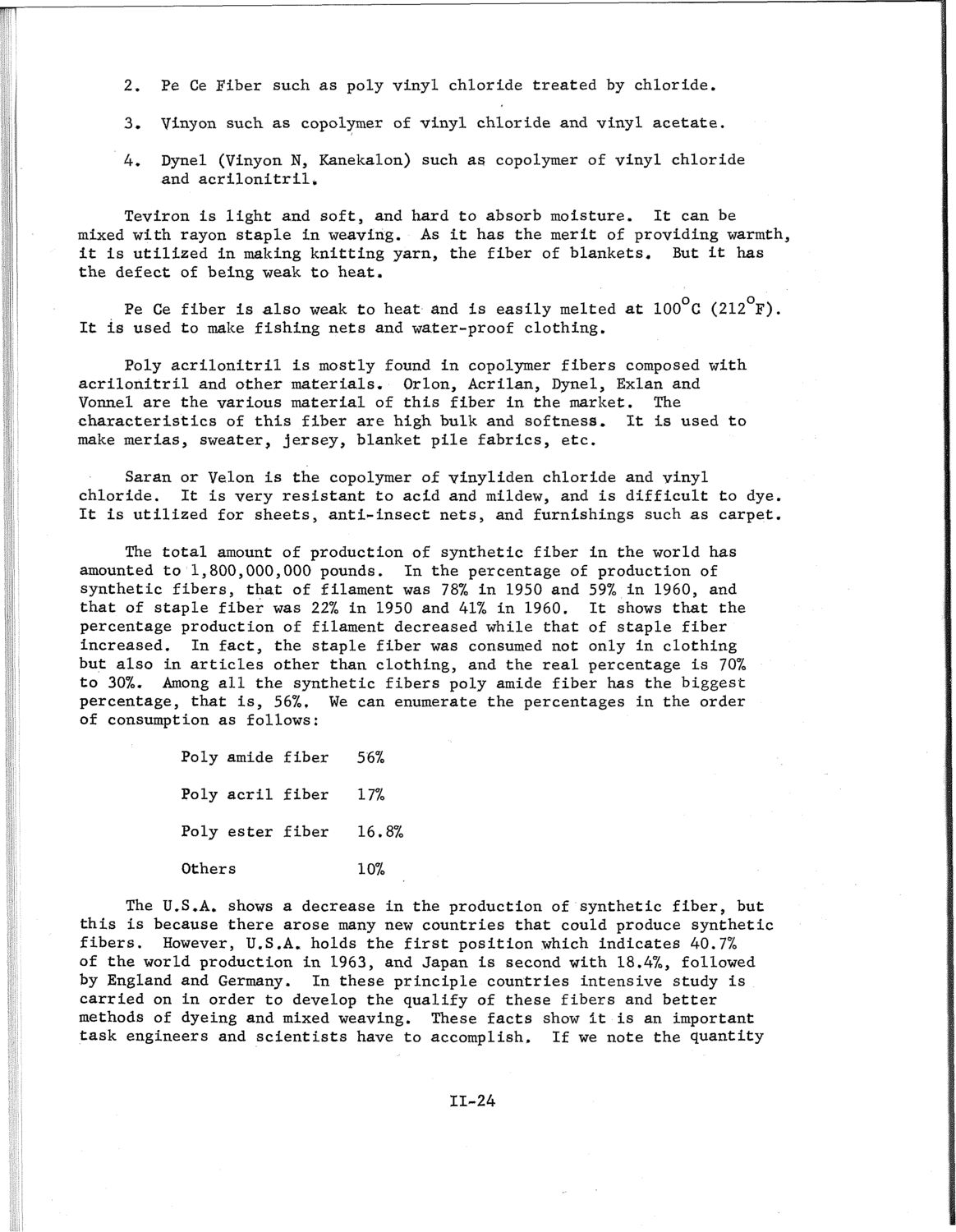| |
| |
Caption: SWE - Proceedings of the First International Conference of Women Engineers and Scientists
This is a reduced-resolution page image for fast online browsing.

EXTRACTED TEXT FROM PAGE:
2. Pe Ce Fiber such as poly vinyl chloride treated by chloride. 3. Vinyon such as copolymer of vinyl chloride and vinyl acetate. 4. Dynel (Vinyon N, Kanekalon) such as copolymer of vinyl chloride and acrilonitril. Teviron is light and soft, and hard to absorb moisture. It can be mixed with rayon staple in weaving. As it has the merit of providing warmth, it is utilized in making knitting yarn, the fiber of blankets. But it has the defect of being weak to heat. Pe Ge fiber is also weak to heat and is easily melted at 100°C (212°F). It is used to make fishing nets and water-proof clothing. Poly acrilonitril is mostly found in copolymer fibers composed with acrilonitril and other materials. Orion, Acrilan, Dynel, Exlan and Vonnel are the various material of this fiber in the market. The characteristics of this fiber are high bulk and softness. It is used to make merias, sweater, jersey, blanket pile fabrics, etc. Saran or Velon is the copolymer of vinyliden chloride and vinyl chloride. It is very resistant to acid and mildew, and is difficult to dye. It is utilized for sheets, anti-insect nets, and furnishings such as carpet. The total amount of production of synthetic fiber in the world has amounted to 1,800,000,000 pounds. In the percentage of production of synthetic fibers, that of filament was 78% in 1950 and 59% in 1960, and that of staple fiber was 22% in 1950 and 41% in 1960. It shows that the percentage production of filament decreased while that of staple fiber increased. In fact, the staple fiber was consumed not only In clothing but also in articles other than clothing, and the real percentage is 70% to 30%. Among all the synthetic fibers poly amide fiber has the biggest percentage, that is, 56%,, We can enumerate the percentages in the order of consumption as follows; Poly amide fiber Poly acril fiber Poly ester fiber Others 56% 17% 16.8% 10% The U.S.A. shows a decrease in the production of synthetic fiber, but this is because there arose many new countries that could produce synthetic fibers. However, U.S.A. holds the first position which indicates 40.7% of the world production in 1963, and Japan is second with 18.4%, followed by England and Germany. In these principle countries intensive study is carried on in order to develop the qualify of these fibers and better methods of dyeing and mixed weaving. These facts show it is an important task engineers and scientists have to accomplish. If we note the quantity 11-24
| |